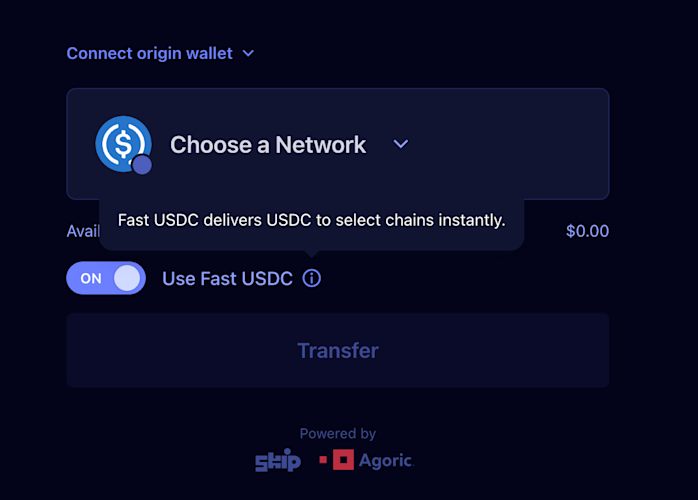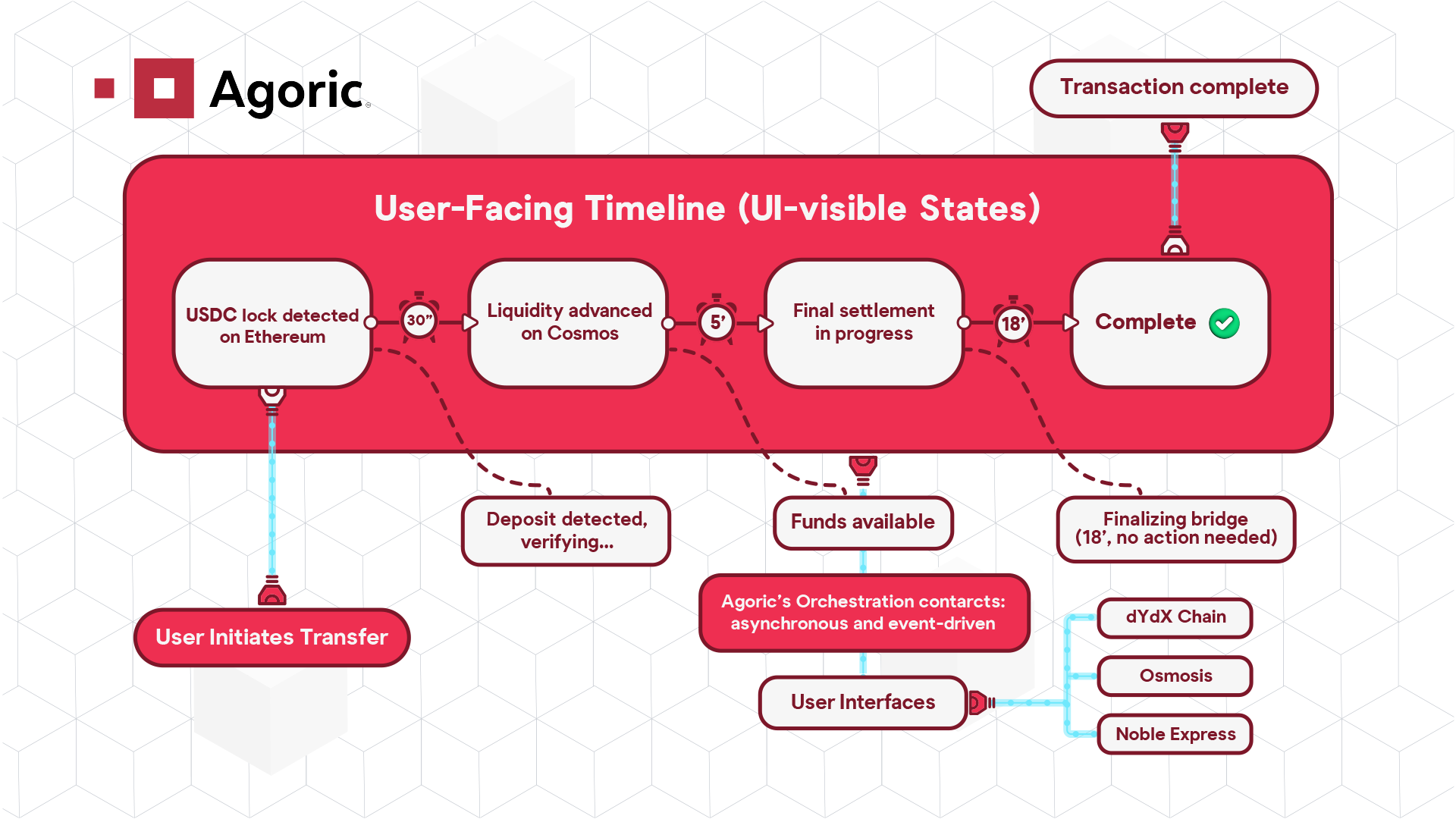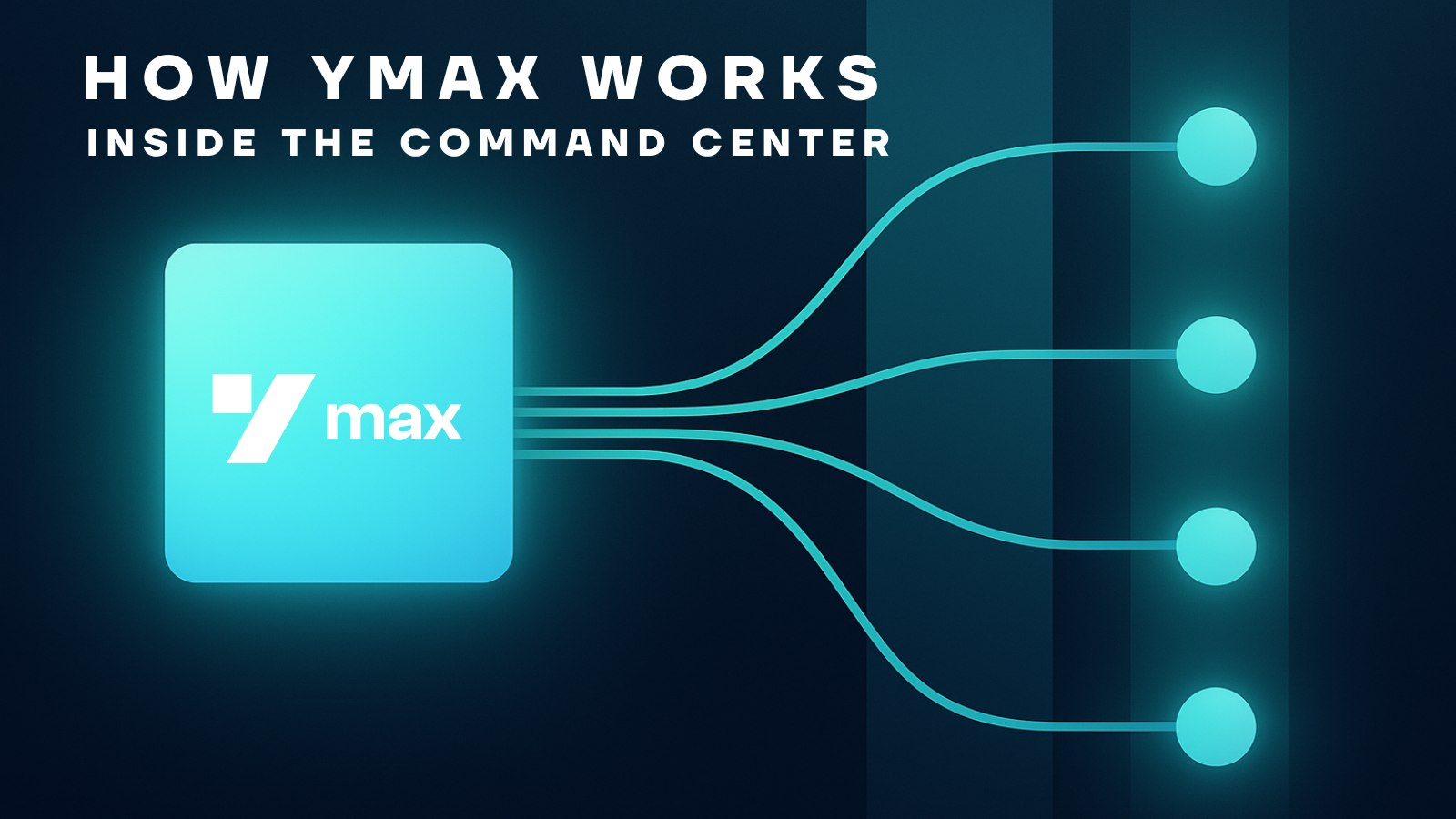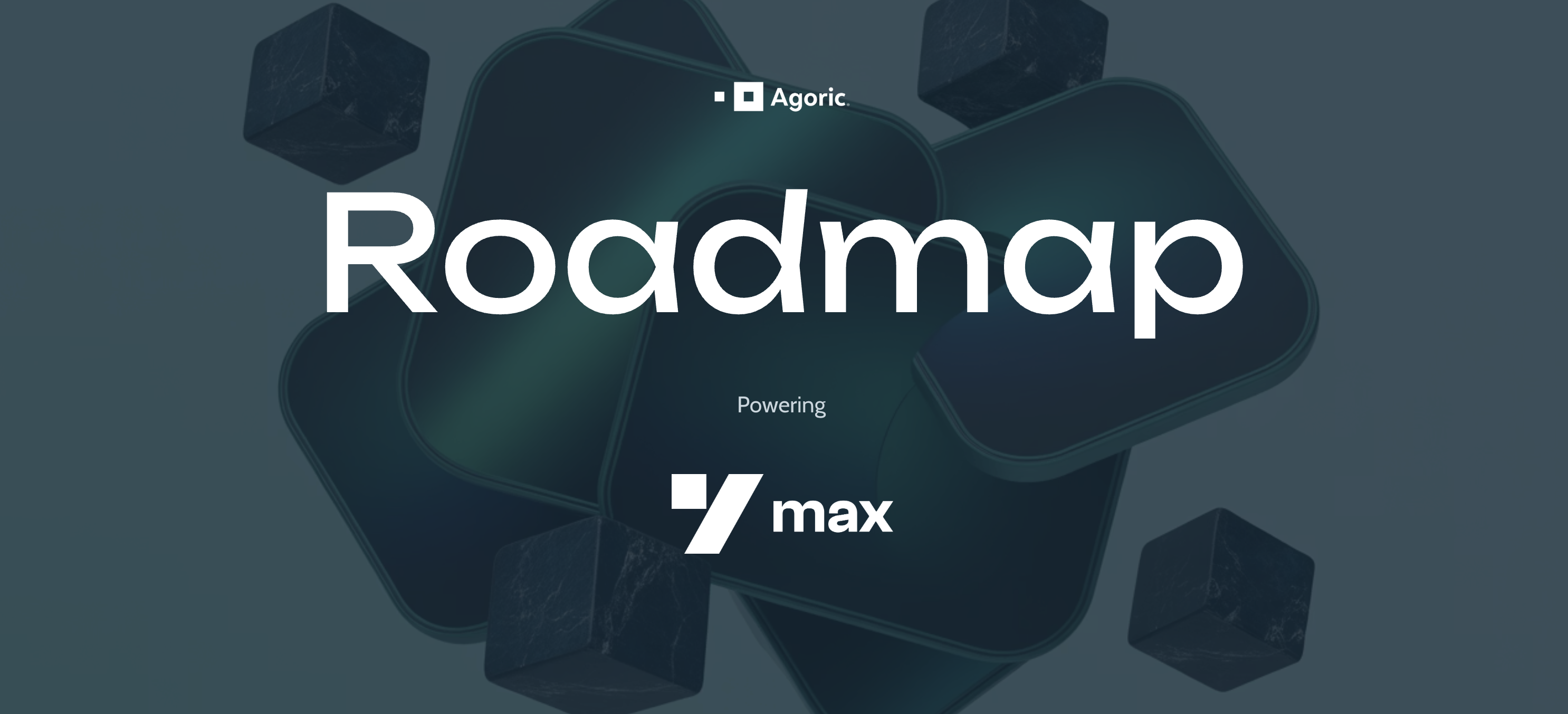Decentralized finance has long struggled with user interfaces that reflect the complexity of its underlying infrastructure: multi-step bridging, unclear transaction states, inconsistent wallet experiences, and long delays that break the user flow. Beyond mere technical constraints, these issues represent fundamental UI challenges. Fast USDC, powered by Agoric Orchestration, addresses these by enabling developers to build faster, simpler, and more unified interfaces.
Innovative teams integrating Fast USDC are fundamentally reimagining UI architecture to eliminate friction points, abstract underlying complexities, and finally present cross-chain orchestrations through intuitive components.
Let's take a look at real use cases and how you could start changing the user's experience on your app through cleaner UIs.
Reducing Friction with Single-Action Interfaces
Traditionally, cross-chain asset movement required users to take multiple explicit actions:
Approve a lock or burn on the origin chain
Wait for confirmations
Switch to the destination chain
Claim or re-initiate the asset on arrival
With Fast USDC, this process becomes a single UI interaction. In practice, apps like Noble Express now offer users a simplified transfer form with only one key action:

Once initiated, Agoric’s orchestrator takes over and detects the source transaction, advancing USDC from a liquidity pool on the destination chain and settling the bridge in the background.
This allows developers to design interfaces that prioritize intent over process. Instead of designing for five individual actions, the UI only needs to express one: “Send USDC quickly to this chain.”
Interfaces for Optional Speed
A recurring UI pattern across Fast USDC integrations is the “fast mode” toggle. Rather than requiring an entirely separate flow, applications surface the option for instant liquidity as a configurable interface element.
As just observed, this appears as a checkbox adjacent to the transfer action. This design respects both novice and advanced users:
First-time users are likely to opt into the faster experience without needing technical context.
Power users can toggle it based on cost, speed, or liquidity preferences.
This toggle model has the benefit of being non-invasive to existing interfaces while still exposing orchestration’s advantages. It gives developers a way to introduce new behavior without rearchitecting the entire interface flow.
Clear, Real-Time Transaction Feedback
Fast USDC enables interfaces to display live transaction states. Because Agoric’s Orchestration contracts are asynchronous and event-driven, frontends can listen to orchestrator progress and update in real time.
In practice, interfaces are implementing staged transaction displays like:

This staged feedback is now used across apps like dYdX Chain and Noble Express, allowing users to confidently proceed even before the full bridge settles. Previously, users might have seen a generic spinner for ~20 minutes. Now, UI flows can display meaningful progress within seconds:
Deposit detected, verifying…
Funds available!
No Network Switching, No Redirects
One of the core benefits of Agoric Orchestration is that all cross-chain logic can be handled in the background. This allows front-end developers to design consistent, context-preserving UIs.
For example, in Noble Express, USDC bridging is embedded directly into the main deposit modal. Users select their source (e.g., Ethereum), enter an amount, and initiate a transfer without leaving the app or switching wallets. Under the hood, orchestration ensures funds are advanced on Cosmos via Fast USDC and routed via IBC to Osmosis.
This pattern holds across other applications like Noble Express, which never redirects to a third-party bridge. The result is a UI flow that feels native even when bridging between ecosystems, which is a necessary evolution for onboarding users unfamiliar with blockchain silos.
Composing Multi-Step Workflows Behind One Interface
Beyond fast transactions, the Fast USDC feature enables complex DeFi flows through minimal UI surfaces. Because Orchestration contracts support async/await, timers, and multi-block state, they can manage entire workflows that previously required multiple user actions.
This has opened the door for “single-click” DeFi interactions like:
Bridging USDC and staking it on arrival
Swapping bridged funds automatically
Triggering DAO votes or purchases post-transfer
From a UI perspective, this means developers can build buttons like:

Behind that, Orchestration automates the entire sequence across chains without expanding the surface area of the UI. The interface expresses a clear user intent, and Orchestration fulfills it safely and verifiably.
Trust Signals and Visual Simplification
By automating traditionally manual steps (bridge, claim, transfer, wait), Fast USDC lets UIs remove whole classes of interface elements:
No “Claim funds” buttons No “Switch to Chain X” prompts
No multi-step wizards or transaction reminders
Instead, UIs rely on simple copy, status displays, and light-touch branding such as:
“Powered by Agoric”
“Fast USDC enabled – 1 min estimated arrival”
“No wallet switch required”
Applications like Noble Express and OmniFlix can use these design cues to build confidence while reducing complexity and then replace technical steps with informative summaries and real-time status.
Designing with the Orchestration Model in Mind
For developers and product teams, Fast USDC introduces a new UI mindset: instead of designing around what the blockchain requires, we can now design around what the user expects.
Agoric Orchestration handles every step in the background:
Monitoring off-chain events (e.g., token burns)
Advancing funds before settlement finality
Triggering cross-chain IBC or GMP messages
Settling liquidity providers
Executing post-bridge logic
This means interfaces can become smaller, more predictable, and action-oriented. By moving state complexity to the orchestrator, we regain clarity.
Fast USDC as a UI Enabler
From the user’s perspective, our feature turns multi-chain bridging into a momentary action. From the developer’s perspective, it enables a UI that doesn’t have to explain or expose chain limitations.
Across all observed implementations, it's clear that interfaces are reducing surface area, while cross-chain friction is being abstracted, and more expressive user flows are being built behind fewer clicks.
This is something that is not possible on legacy chains, such as Ethereum. Fast USDC transformed it into a reality. As more teams adopt Orchestration, the interfaces of DeFi are on the path from feeling fragmented to fluid, from technical to intuitive.
Because behind every seamless UI, there should be a powerful orchestrator.
Start integrating Fast USDC today and take your application to the next level.
Learn more: agoric.com/fast-usdc
Book a demo: Schedule a call



